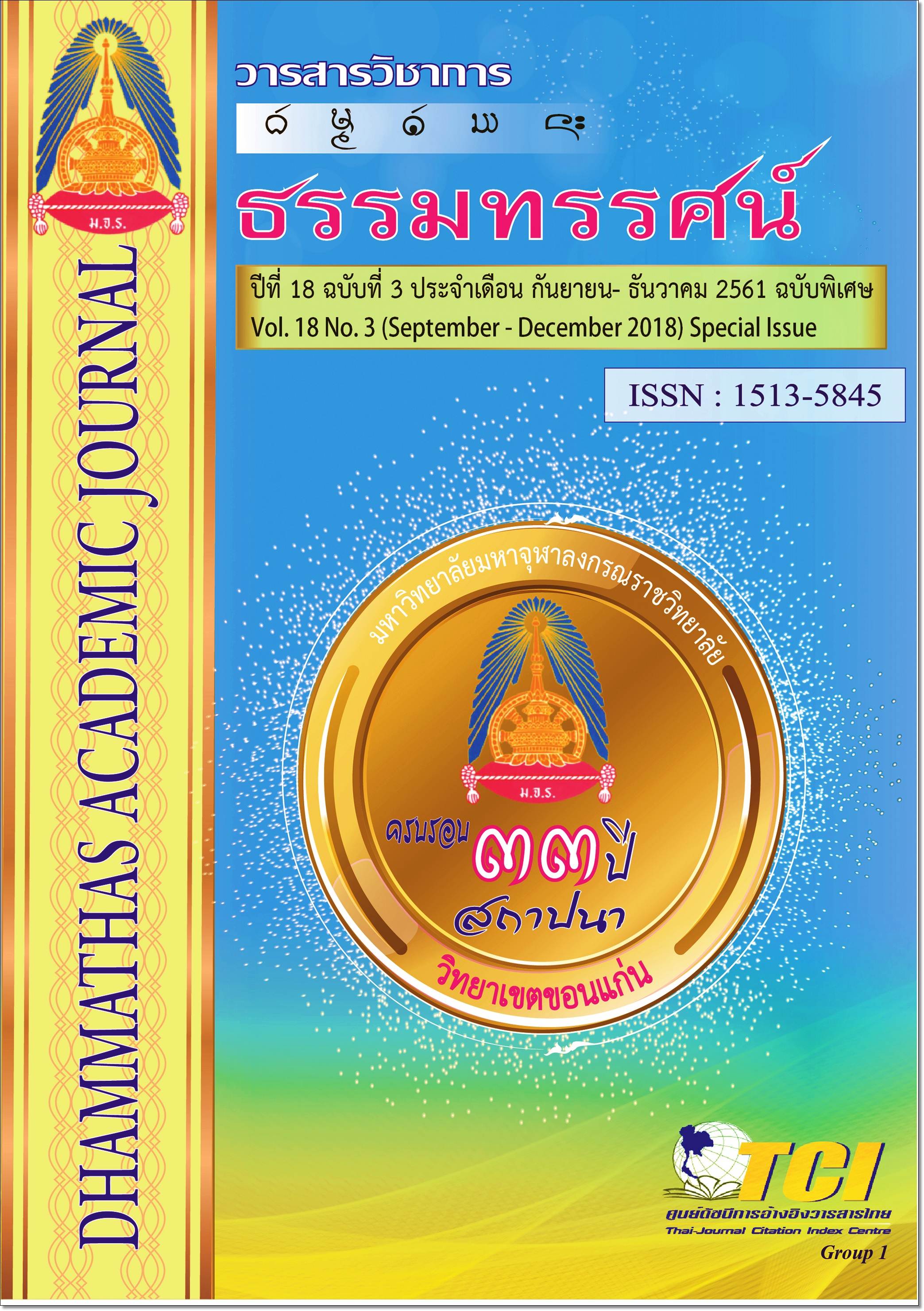A Model Improving Students’ Aggressive Behaviors by Buddhist Integrated
Main Article Content
Abstract
This research has three aims 1) to studythe influence factors by students’ aggressive behaviors, 2) to create a model of improving students’ aggressive behaviors by Buddhist integration and 3) to study the result of using a model of improving students’ aggressive behaviors by Buddhist integration. This research was the Mixed method research that are Quantitative Research and Qualitative Research. This research has three aims 1) to studythe influence factors by students’ aggressive behaviors, 2) to create a model of improving students’ aggressive behaviors by Buddhist integration and 3) to study the result of using a model of improving students’ aggressive behaviors by Buddhist integration. This research was the Mixed method research that are Quantitative Research and Qualitative Research.
The results of this research were found that:
1. The influence factors to students’ aggressive behaviors in overall were at media level (µ= 3. 15, σ = 0.03). When considering each side, it was found that; Physical violence suffered by parents is in high level (µ= 3.51, σ = 0.16); Verbal violence suffered by parents is in average level (µ=2.82, σ = 0.12); Factors of friends datingis in average level (µ =3.15, σ = 0.09) Factors arising from the school context is in average level (µ = 3.15, σ = 0.14 and Factors that result from media consumption is in media level (µ = 3.13, σ = 0.11).
2. The Model of improving students’ aggressive behaviors by Buddhist integration has the goal to reduce the aggressive behaviors of students, physical, verbal and mental. Researchers have created a framework based on the study of documents, academic texts about the theory of aggressive behavior integration with the concept of behavioral modification based on Buddhism and the storage area through survey, inquiry, interviews, and group discussions until. The model of improving students’ aggressive behaviors by Buddhist integration. This is a form of training activities under the framework of the Threefold Training are; Sila, is an activity for students to learn how to create a good relationship to reduce conflicts caused by physical controversy, verbal abuse and the value of others; Samadhi, is an activity for students to learn and understand the state of emotions to develop the mind is not sensitive to stimuli that affect. Know to suspended angry, and wisdom is an activity for students tohave the skills to analyze and dare to solve problems in finding a way to live without aggression.
3. The results of the model of improving students’ aggressive behaviors by Buddhist integration were found; before the experiment (Pre-test), students had aggressive behavior at high level (µ = 4.05, σ = 0.05). After the experiment (Post-test), students had aggressive behavior at low level (µ = 2.18, σ = 0.05). It shows that the model of improving students’ aggressive behaviors by Buddhist integrationcan reduce the aggressive behavior of the students was significantly reduced at the 0.05 level.

